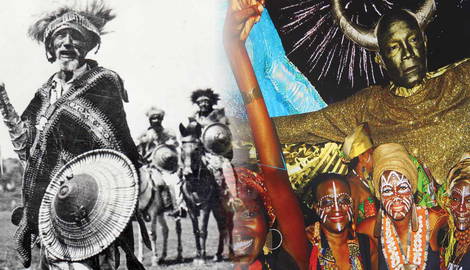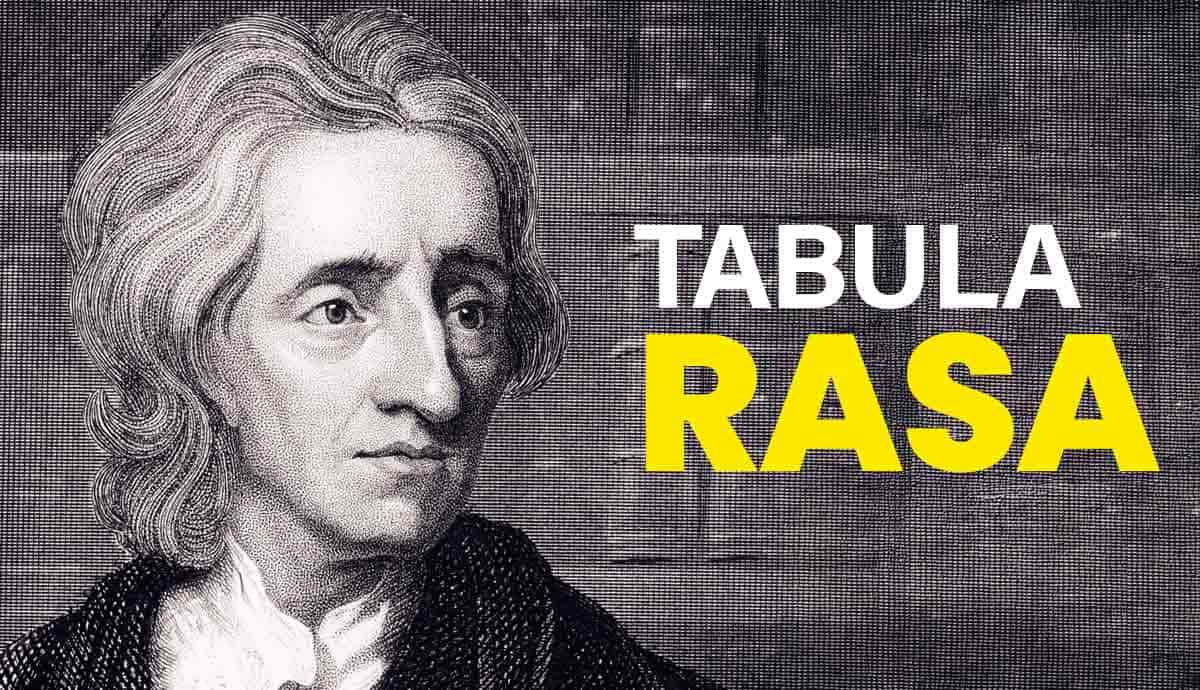
A tenet is a principle, belief, or doctrine generally held to be true, especially one held in common by members of a group. Rastafarianism as a philosophy sees various key tenets that each contribute to the overall ontology and epistemology of Rastafari. While some key tenets don’t require profound philosophical knowledge to be understood, others need more explanation. With Rastafarianism, the tenets of “divinity within,” “Blackness,” and “African redemption” are crucial for understanding the overall philosophy and require additional explanation.
Divinity Within: InI and Spirituality

First and foremost, the concept of “divinity within” is perhaps the most fundamental tenet of the Rastafari movement. It emphasizes that everyone possesses an inner spiritual essence: inherently divine. While formerly this inherently divine essence was initially solely related to a higher power in the form of Haile Selassie I, many Rastafari now see divinity within as being connected to the universe. It is an understanding of the divine interconnectedness of life, not merely a belief in it.
The concept of divinity within is the understanding of the interconnectedness of all living beings–something that can also be seen in the Ubuntu philosophy. The term InI, or I-an-I, connotes this non-dual awareness of the relationship between the individual self and the spiritual divine, or “Jah.” The first “I” refers to the individual itself, while the second “I” refers to the universal context that holds the individual self and allows it to exist. Additionally, InI is used as a replacement for “we,” whereas it acknowledges better the presence of a unified reality that spiritually binds together two individuals. The unified reality is the divinity that is nowadays referred to as what is carried within each and everyone, in some sense moving away from the position of Haile Selassie I as the higher being.
While it is certainly true that in some cases, Rastafari still uses the term InI to refer to a higher power as a divine being, it is equally adopted by people who see things differently. Therefore, “divinity within” takes on two forms: in relation to a higher being or to all and everyone in the wider universe.
While the idea expressed by InI is desirable in Rastafari, it only works if Rastafari can embody either of the two interpretations. This isn’t always easy and can only be achieved through self-realization. For some, this process includes chanting, prayer, and meditation. In many cases–if not all–this also includes a natural living lifestyle and dreadlocks. Concerning divinity within, dreadlocks are believed to be a physical representation of the roots that connect Rastafari to the earth and, by extension, to the divine.
Self Confidence, Self Love, and Responsibility

Once such self-realization is manifested, the pathway for self-confidence and self-love opens up. Since the self in Rastafari, per definition, includes others, self-confidence and self-love automatically mean confidence and love towards others.
“Divinity within,” therefore, plays a significant role in empowering individuals through instilling a sense of responsibility. It provides a fertile ground for embracing individual merit and cultural heritage while enabling the inner strength and resilience necessary for the other two tenets discussed in this article to flourish.
Blackness or Black Identity in Rastafari

Rastafari originally came up as a movement of dissonance and protest against the British hegemonic oppression, including the vast dehumanization of the black masses of Jamaica. The movement sprouted from people searching for self-affirmation and cultural identity in Africa and their African disposition. Many younger Jamaicans lost hope during and after the First World War, which grew the movement. A call for a communitarian economic philosophy and emphasis on the positive identity of Blackness arose due to increased engagement, which led to a renewed view of “Blackness.”
As should be clear, colonizers saw black people as the inferior race. After centuries of reproducing such a discourse, one can imagine that it has influenced the subjects–the colonized people–at least in some form or way. While it was predominantly the colonizer–not the colonized–that believed in the inferiority of black people and reproduced the discourse, the identity of the colonized people somewhat faded. One might say the identity of the African diaspora was numbed down–a term referred to by the Rastafari community as downpression rather than oppression.
Therefore, a crucial tenet of the Rastafari movement emerged as a “psychology of redemption.” In Rastafari, this psychological state is Afrocentric, meaning a positive understanding of and commitment to African culture and tradition is central. African heritage and black liberation became quintessential for the Rastafari movement to grow while creating a symbolic character for black identity.
The state of black people before the colonization of Africa is, in a sense, idealized. It is the basis of black experience all over the world. Ethiopia, mentioned in the Bible, became synonymous with this Blackness. After Ethiopia’s victory against the Italians in 1896, it also became associated with political sovereignty, laying the foundation for modern Afrocentrism.
How Blackness Relates to Divinity Within and African Redemption

As expected, the key tenet “Blackness” is thoroughly related to the other two tenets discussed in this article. While “divinity within” allows for inner strength and resilience to express Blackness, as understood by Rastafari, it also works the other way around. The idealization of African heritage and black liberation comes with implications for how “divinity within” can express itself. Rastafari incorporates Afrocentric spirituality, drawing inspiration from African religious traditions, including elements of Ethiopian Coptic Christianity, Nyabinghi chants, and other African rituals. By embracing these spiritual practices, Rastafarians reconnect with their African roots and honor the spiritual beliefs of their ancestors.
On the other hand, Blackness relates to the tenet of African redemption through its relation with social and political activism. As indicated before, the conceptualization of Blackness in Rastafari allows for an aspect of social and political activism. Rastafari has been a vocal advocate for social justice, racial equality, and the end of systemic racism. They actively participate in movements addressing racial discrimination and work towards dismantling oppressive structures that disproportionately affect black communities. A logical consequence of these movements is the growing call for African redemption.
African Redemption, Reparations, and Repatriation

The third tenet discussed in this article is African redemption, which takes the two first tenets to inform a way forward from here. In the spirit of Rastafari, the merit of Blackness as conceptualized before in relation to “divinity within” has one logical outcome. Because of “divinity within,” everyone takes responsibility for each other and allows the other to be loved. In that sense, it is imperative to acknowledge the history of colonization in which this responsibility and love for each other were abandoned.
Since the idea of Blackness is now defined by the formerly colonized as belonging to Africa, this needs to be central to future endeavors and ways of relating–or loving. From this point onwards, some actions must be taken to restore relationships.
Repatriation for the Enslaved

Repatriation, the return to Africa, is a defining tenet of the Rastafari movement. Rooted in the historical trauma of the transatlantic slave trade and the desire for redemption, repatriation signifies not just a physical journey but a spiritual and political aspiration for Rastafari. Repatriation resonates deeply with the broader history of Black peoples in the Americas and draws on acknowledging the lack of responsibility and love received.
Enslaved Africans, uprooted from their homeland and forced into a life of bondage, nurtured a fervent desire to return. This longing found expression in rituals, folk stories, and religious narratives. Repatriation intertwines with religious interpretations, political objectives, and self-development in the Rastafari movement. For Rastafari, repatriation to Africa, specifically Ethiopia, is intertwined with their spiritual faith and levity. It is central to their cultural expressions, chanted in sacred music and reggae tunes, and incorporated into rituals and ceremonies.
The belief in repatriation is not merely a passive anticipation but an active critique of the social and political conditions they face–which are believed to be far worse than the pre-colonization conditions. African redemption represents an escape from the historical burdens of slavery and a rejection of the oppressive systems that continue to marginalize them.
Central to Rastafari or Earlier Critique?

Historically, Rastafari’s claims for repatriation predate the movement itself. Various individuals, communities, and organizations in the Caribbean, including Marcus Garvey and the Universal Negro Improvement Association, advocated for the return to Africa. Rastafari built upon these foundations, creating a unique identity that intertwined the call for repatriation with the veneration of Emperor Haile Selassie I of Ethiopia. This connection became especially significant after Haile Selassie I’s visit to the Caribbean in 1966, which galvanized the Rastafari movement and led to an influx of individuals and families returning to Ethiopia.
Internationally, the Rastafari community expanded its reach, with members from the Caribbean, the United Kingdom, the United States, and various European countries settling in Ethiopia. This internationalization reflects the movement’s global impact and enduring commitment to repatriation. In comparison, some Rastafarians have rationalized their presence outside Africa as a form of “spiritual” return. The aspiration for a physical return to Africa persists, fueling the movement’s cultural expressions, music, and activism.
Repatriation remains a vibrant aspect of Rastafari culture in the twenty-first century, perpetuating the movement’s legacy of resilience, faith, and determination. The international Rastafari community continues to be a significant force in the ongoing discourse of repatriation, connecting the historical struggles of the past with the aspirations for a brighter future in the land of their ancestors.









